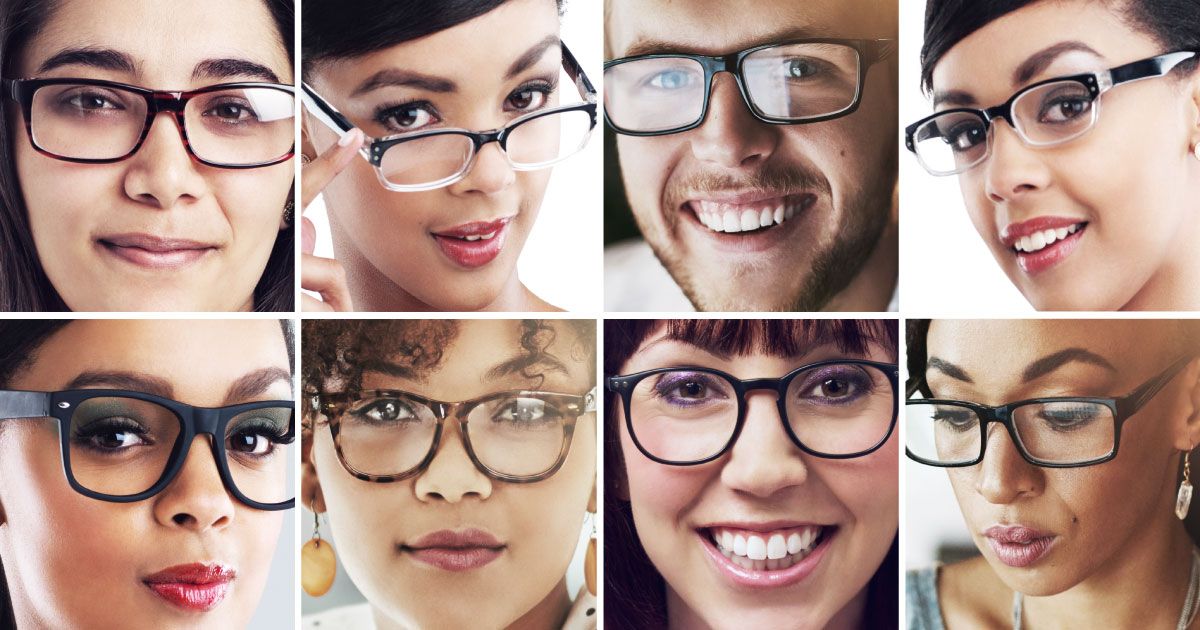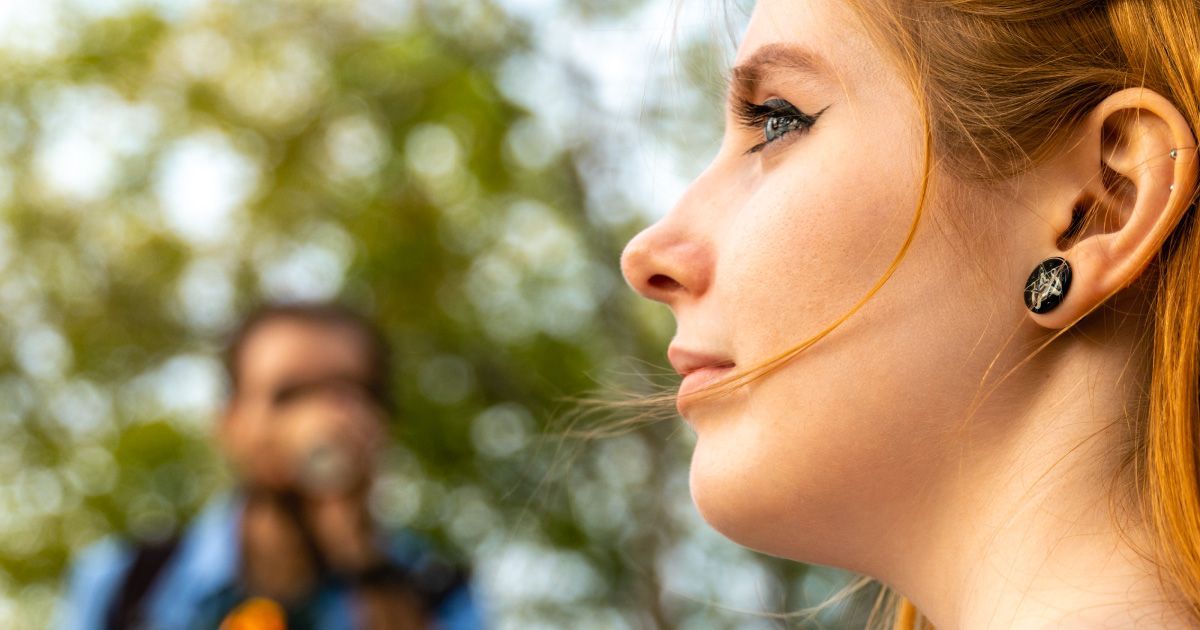Discover the Psychology of Eyewear Styles

Read time: 5 minutes
Have you ever wondered why certain eyewear styles just seem to "click" with you, while others fall flat? The answer often lies in the psychology of design, where shapes and colors have the power to evoke emotions and personal connections. Our attraction to certain shapes isn't just a matter of aesthetics; it's rooted in how they make us feel. Whether you lean towards the sleek sophistication of rectangular frames or the playful allure of round frames, these preferences often reflect a deeper psychological resonance.
Understanding why we're drawn to particular shapes and styles can enhance our shopping experiences and empower us to make more informed choices. At Urban Optiks Optometry in San Diego, we understand that luxury designer eyewear isn't just an accessory - it's an expression of individual style and personality. By exploring the psychology behind our style choices, we open the door to discovering eyewear that truly resonates with us.
How We Perceive Shapes
The human brain is finely tuned to recognize and interpret shapes, which plays a huge role in the choices we make—even when it comes to eyewear. Shapes have the power to evoke different emotions and reactions, shaping our perception and preferences. For example, angular shapes like squares and rectangles convey strength and authority. People who choose these shapes in eyewear often exude confidence and decisiveness.
On the other hand, round and oval shapes often bring about feelings of softness and approachability. They can evoke a sense of calmness and harmony, appealing to those who wish to project openness and empathy. Aviator frames often capture a sense of adventure, reminding us of explorers and pioneers, which appeals to the more daring souls among us.
Here's a quick rundown of how different shapes might influence perception:
- Rectangular frames: Exude professionalism and strength.
- Round frames: Offer warmth and friendliness.
- Cat-eye frames: Suggest fun and creativity.
- Aviator frames: Reflect adventure and exploration.
Each shape has its own character, which is why selecting eyewear is as much about self-expression as it is about function. Understanding these psychological nuances helps in choosing frames that align with one's identity and the image they wish to project.
The Role of Personal Identity in Style Choices
Our personal identity greatly informs the style choices we make. Eyewear, being an element of personal style that sits right on the face, can often serve as an extension of our personality. Different styles can reflect different facets of who we are or who we aspire to be.
For someone who identifies as eclectic and free-spirited, vibrant and unique frame designs may appeal, showing off that creative side. Conversely, a person with a more minimalist approach might gravitate towards simpler designs with neutral tones, reflecting clarity and focus. An example is a person with an adventurous streak who might prefer frames that are quirky or feature bold colors, showcasing a willingness to embrace life's experiences.
By understanding how personal identity influences style choices, we can better navigate options and find frames that resonate not only aesthetically but also personally. This blend of psychology and fashion underscores the emotional connection people make with their eyewear, leading to choices that truly reflect who they are.
Cultural and Social Influences
Cultural and social factors significantly shape how we select styles, and eyewear is no exception. Trends often stem from cultural shifts, making them an exciting aspect of fashion. Luxury designer eyewear often mirrors these trends, evolving alongside social changes and cultural expressions. Being aware of these influences helps in understanding why certain eyewear styles come into vogue and how they resonate with our cultural context.
Pop culture is another powerful force that sways our style choices. Celebrity endorsements and statements made in films or television can turn specific eyewear styles into must-have items almost overnight. Fashion influencers on social media further amplify these trends, introducing their followers to new and daring styles, shaping preferences on a grand scale. This means that the eyewear we choose can be a reflection of a broader cultural conversation, making it a way to participate in the trends and ideas of the moment.
Customizing Your Look
Finding eyewear that complements your unique face shape and personal style is an art. It involves much more than just picking a pair that looks good on the shelf. Considering your face's contours can help in choosing frames that enhance your features. For instance, if you have a round face, angular frames may add some definition. On the other hand, those with square faces might find that round frames soften their angular features.
Here are some tips to customize your look with eyewear:
- Understand Your Face Shape: Determine whether your face is round, oval, square, or heart-shaped to find complementary frames.
- Consider the Occasion: Choose different styles of eyewear for professional settings versus social gatherings to suit your needs.
- Play with Colors and Textures: Use colors that complement your skin tone or add a pop of color for a bold statement.
Mixing and matching styles is a great way to create a look that feels genuinely personalized. Confidence plays a huge role in how those choices come across, as it allows you to wear any style with ease and flair. The right pair of glasses not only helps you see better but also boosts self-assurance and lets your personality shine through.
The Takeaway
By exploring the psychological factors behind our attraction to certain shapes and styles, we can make insightful decisions about what suits us best. It's fascinating to consider how much our choices reflect who we are and how we relate to the world around us. With this knowledge, choosing the perfect eyewear becomes a fun, expressive journey rather than a mundane task.
Understanding how shapes resonate on a personal level, acknowledging cultural influences, and customizing your look can transform eyewear shopping into a richer, more satisfying experience. The right pair of frames can define your look, echo your personality, and make a lasting impression. With this guide, you're well on your way to discovering that perfect pair that embodies your unique style.
Explore the fascinating connection between shapes and your personal style with confidence. To find eyewear that perfectly matches your unique identity, browse the curated selection of luxury designer eyewear available at Urban Optiks Optometry. Discover how the right frames can elevate your look and reflect who you truly are.
Share this blog post on social or with a friend:
The information provided in this article is intended for general knowledge and educational purposes only and should not be construed as medical advice. It is strongly recommended to consult with an eye care professional for personalized recommendations and guidance regarding your individual needs and eye health concerns.
All of Urban Optiks Optometry's blog posts and articles contain information carefully curated from openly sourced materials available in the public domain. We strive to ensure the accuracy and relevance of the information provided. For a comprehensive understanding of our practices and to read our full disclosure statement, please click here.


















